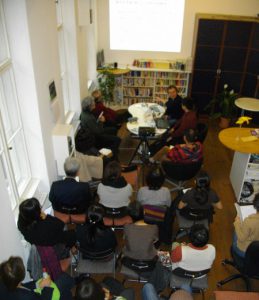The final disposal of nuclear waste consists in storing the waste until its radioactivity becomes low enough to not affect the environment. We first talk about what kind of nuclear waste there is, then what the sources of the waste are, and then how we manage them.
What is nuclear waste?
There are two criteria to define whether some waste is nuclear waste or not. The first one is based on measuring the amount of radiation that is absorbed in a certain amount of time (10 mSv/y), the second one is based on the amount of emitted radiation (radioactivity, Bq). Both have thresholds that used to define whether something is nuclear waste or not. If some specific waste goes over either one of two thresholds, it is classified as nuclear waste. One other point here is if a waste is less than this criteria even the waste has some radioactivity, such waste can be recycled in the market.
Yamauchi’s memorandum
Previously, I had the misconception that all the waste which is radioactive and which is produced by nuclear reactors is nuclear waste. However, there is a criterion that defines what nuclear waste is. In a later section, I extended my memo about the meaning of the criterion. For instance, what is Sievert and what is Becquerel, and what is the difference between radioactivity and radiation.
Classification of nuclear waste
Nuclear waste is classified in the following three categories:
- High level (TRU waste, used nuclear fuel)
- Middle level (This waste is rare)
- Low level
Germany’s classification is based on how much heat the waste generates since it is important for the waste management. TRU waste consists of TRans-Uranium elements whose atomic number is higher than Uranium. TRU waste is usually generated by a running reactor.
Source of nuclear waste
The sources of high level nuclear waste (+TRU waste) are:
- Used nuclear fuel
- Waste liquid by reprocessing, vitrified waste
- etc. …
The sources of low and middle level nuclear waste are:
- Nuclear power plant
- Decommissioning process
- Nuclear fuel fabrication facility
- Used nuclear fuel reprocessing plant
- (uranium mine, enrichment plant)(mining field)
- Medical institution
- Industrial factory
- Research and development institutions, miscellaneous
A nuclear power plant always produces nuclear waste regardless of whether the reactors are running or not, because of the maintenance process. For example, the clothes of the workers will become irradiated even if the reactor is not active. Hospitals and some industry are also sources since they use radioactive materials.
All nuclear waste is managed as dangerous substances by law in Germany. On the other hand, the last three items are not managed as dangerous substances in Japan. Therefore, we do not know how some nuclear waste is transported or preserved in Japan.
Yamauchi’s memorandum
In my personal opinion, Japan should also handle the last three items as dangerous substances as in Germany. This is to ensure control of these types of radioactive waste.
The classification as nuclear waste should depends on whether the radiation dose is more than 10mSv/y or not. If the radiation dose is less than 10mSv/y, we can recycle the waste in the public market. However, this threshold (10mSv/y) does not really tell whether this is safe or not. I would like to notice that by this criterion, safety is unclear. Also according to this definition, we can recycle a steel with 9.9mSv/y radiation dose to build a house or household items. This is legal. If you search with keywords “steel radioactive waste recycle”, you can find some information. However, many of the cases could be completely legal. In this article, I do not discuss the safety of this clearance criterion since the safety of radioactive waste is difficult to discuss. The best way is just to avoid it. But I would like to point out that some waste which is pass this criterion can be legally in our market.
